When it comes to smoking or barbecuing, brisket stands as a titan among cuts of meat, beloved for its flavor and tenderness when cooked just right. But what happens when your brisket is cooking too fast?
It’s a common concern for barbecue enthusiasts, stirring questions about the quality of the final product and whether it can be salvaged. Here, we’ll explore the implications of a brisket that’s racing through its cooking time and offer practical solutions.
Recognizing the Signs of a Brisket Cooking Too Fast
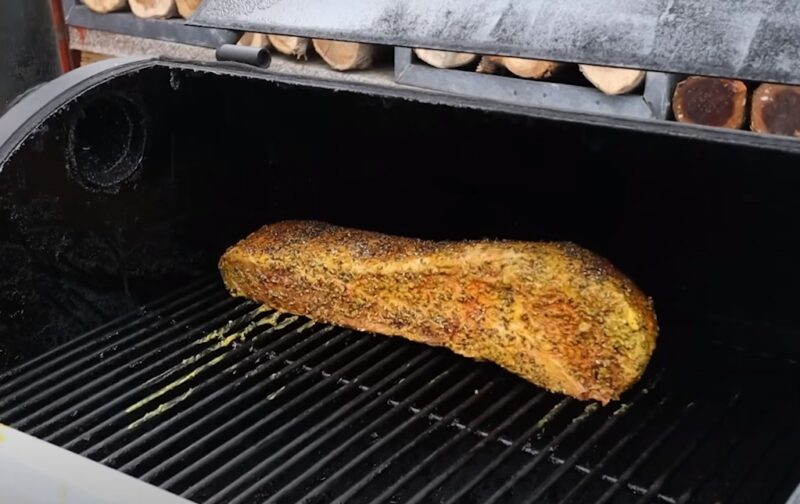
The journey to a perfectly cooked brisket is a marathon, not a sprint. Slow and low is the mantra for this cut, typically requiring a cooking time of 1 to 1.5 hours per pound at temperatures around 225-250°F. Cooking brisket too quickly can lead to a host of issues, from underdeveloped flavors to tough, chewy textures.
- Texture Issues: Proteins break down slowly, and if the brisket cooks too fast, it can become tough or overly soft.
- Flavor Development: The slow rendering of fat and the formation of a crust or “bark” contribute to the brisket’s taste. A hastened cook can result in less robust flavors.
- Moisture Retention: The careful balance of temperature and time helps the brisket retain moisture. Cook too fast, and you risk a dry outcome.
Spotting a Brisket on the Fast Track
Observing the brisket’s internal temperature is key to identifying if it’s cooking too quickly. A probe thermometer will be your best friend in this endeavor. Expect the brisket’s internal temperature to rise steadily but gradually. If you notice a rapid increase in temperature, particularly in the first few hours of cooking, it’s a clear indicator that the meat is cooking at an accelerated pace.
- Unexpected Milestones: Reaching internal temperature milestones ahead of schedule is a red flag.
- Texture and Color Changes: If the brisket’s exterior darkens too quickly or the meat feels firmer than expected early on, it could be overcooking.
Consequences for Texture and Flavor
Accelerated cooking can result in a brisket that’s not as tender as it should be. The rapid rise in temperature doesn’t allow for the collagen in the connective tissue to break down completely, which is necessary for that coveted melt-in-your-mouth texture. The hallmark smoky flavor may also be underdeveloped, and the crust might lack complexity.
Adjusting the Cooking Process
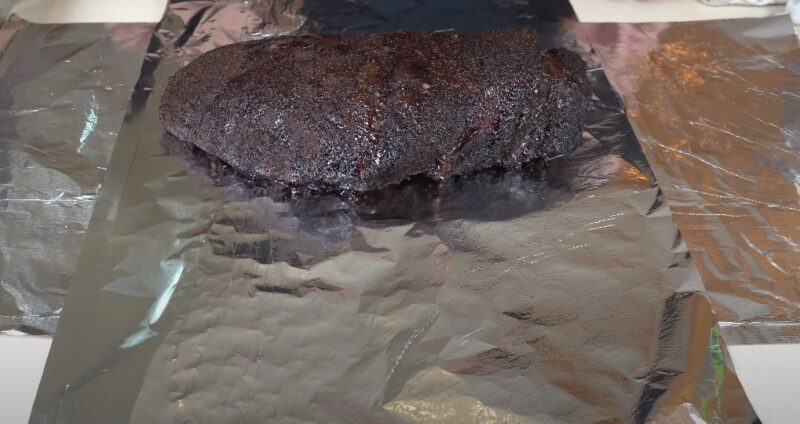
When you’ve identified that your brisket is cooking too fast, immediate action can help mitigate potential damage. Lowering the smoker’s temperature is the most straightforward step.
If you’re cooking at 250°F and the brisket is racing through its temperature milestones, consider dropping the temperature to 225°F or even 215°F if your smoker allows for such precision.
- Adjusting Airflow: Limit the smoker’s airflow to reduce heat.
- Using a Water Pan: Placing a water pan in the smoker can stabilize the temperature.
- Repositioning the Meat: Move the brisket to a cooler part of the smoker, away from direct heat sources.
Wrapping
Wrapping the brisket in butcher paper or foil, known as the Texas Crutch, can help you gain control over a cook that’s progressing too quickly. This method can slow down the rate at which temperature increases in the meat, and it also locks in moisture.
- Butcher Paper: Butcher paper is breathable, allowing some smoke to continue flavoring the brisket while slowing the cooking.
- Aluminum Foil: Foil stops the smoking process but can drastically slow down the cooking time if necessary.
Altering the Cooking Method
If all else fails, consider changing your cooking method altogether. Moving the brisket to an oven, where the temperature is more easily controlled, can be a saving grace. It won’t have the same smoky infusion, but it’s a better alternative to an overcooked brisket.
- Oven Finish: If the brisket’s exterior is perfect but it’s not yet tender, finishing in the oven can preserve the crust while allowing the inside to cook properly.
- Resting: Resting the brisket for a longer period can help redistribute the juices and heat, aiding in breaking down any tough fibers.
Correcting and Salvaging an Overcooked Meat
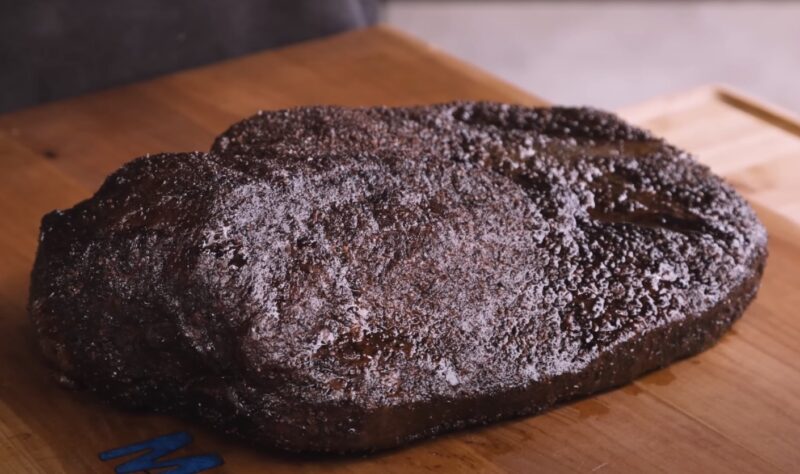
Once brisket has surpassed its ideal cooking temperature, assess the damage. If the internal temperature is only a few degrees over, it might still be salvageable with a proper rest. However, if it’s well beyond the target temperature, the strategies shift towards making the best of the situation.
- Slight Overcooking: Let the brisket rest wrapped in a cooler. The residual heat will continue to tenderize the meat.
- Significant Overcooking: Consider repurposing the brisket into dishes where dryness is less noticeable, like chili or stew.
Rescue Techniques
A brisket that’s slightly over can often be saved with a good rest in a cooler, allowing it to finish cooking from residual heat. For those who have tipped too far into the overcooked zone, creativity is key. Braising the sliced meat in a flavorful liquid can reintroduce moisture and make the brisket palatable again.
- Resting: Use a cooler filled with towels to create an insulated environment for resting.
- Braising: Submerge the overcooked slices in a simmering pot with beef broth or barbecue sauce for a quick braise to add moisture.
Preventative Measures for Next Time
Learning from the experience is invaluable. Keeping detailed notes on your cook times, temperatures, and adjustments will guide your next brisket adventure.
- Temperature Logs: Maintain a record of smoker and meat temperatures throughout the cook.
- Cooking Adjustments: Note any changes made during the cooking process for future reference.
- Equipment Calibration: Regularly check that thermometers and smokers are calibrated and functioning accurately.
The Slow and Steady Approach
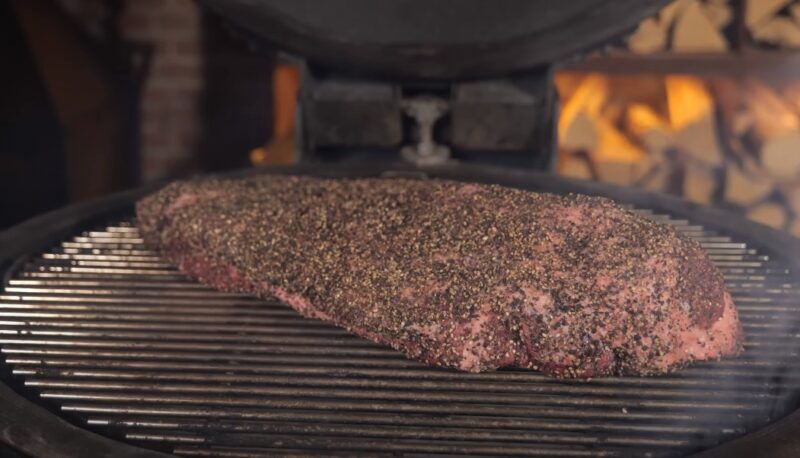
Cooking brisket is an art form that balances time, temperature, and technique to achieve the perfect tender, juicy, and flavorful result. When brisket cooks too fast, it’s not just about a quicker meal; it’s a matter of compromising quality. However, with a few adjustments and a watchful eye, you can steer your brisket back to the path of perfection.
The Role of Time in Brisket Perfection
Brisket is known for its tough, collagen-rich fibers that require a prolonged cooking process to break down properly.
This process cannot be rushed without affecting the outcome. Time allows for a process called the “stall,” which is crucial for rendering fat and collagen, resulting in tender meat.
- Collagen Breakdown: The low and slow method facilitates the melting of collagen, which turns into gelatin, tenderizing the meat.
- Fat Rendering: Time also allows the fat to render slowly, basting the meat internally to keep it moist.
- Smoke Absorption: The longer the meat is in the smoker, the more smoke flavor it can absorb, contributing to its distinctive taste.
The Pitfalls of Rushing
Impatience or high cooking temperatures can lead to brisket that has not had sufficient time to transition through the necessary stages of cooking. Rushing the process bypasses these stages, resulting in a subpar brisket.
- Inadequate Fat Rendering: If the fat doesn’t render properly, the brisket can be greasy or tough.
- Insufficient Flavor: Without the full cooking time, the smoke doesn’t deeply penetrate the meat, resulting in a lackluster flavor.
- Uneven Cooking: A brisket that cooks too quickly may not cook evenly, with some parts overdone and others undercooked.
Why Patience Matters
Patience is more than a virtue in brisket preparation—it’s a requirement. The cooking process should not be rushed. Instead, it should be monitored and adjusted as needed to ensure the brisket cooks evenly and slowly.
- Monitoring: Check the brisket periodically rather than constantly opening the smoker, which can cause temperature fluctuations.
- Adjustments: Be prepared to adjust the smoker’s temperature or the brisket’s position within it to control the cooking rate.
- Resting: After cooking, the brisket should rest for at least one hour to allow the juices to redistribute, but longer is often better.
Crafting the Perfect Bark
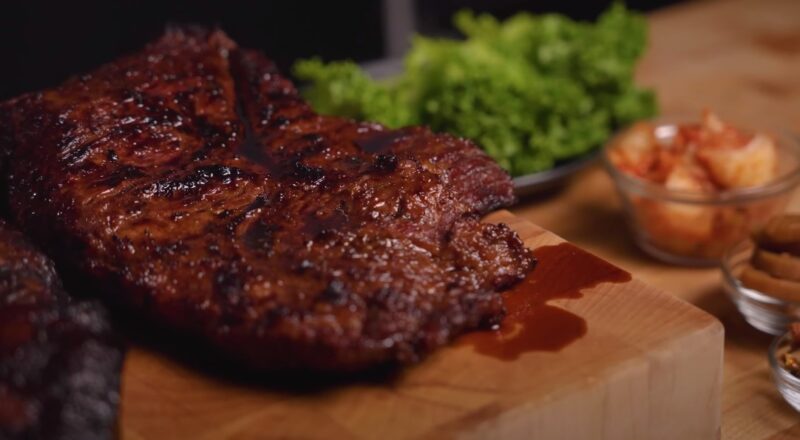
The bark is the rich, flavorful crust that forms on the outside of the brisket during the smoking process. This coveted feature is a product of the Maillard reaction, where the meat’s proteins and sugars combine and react under heat to create complex flavors and aromas. We’ve also written about how to thaw a brisket before smoking, so make sure to check it out!
- Seasoning: A well-balanced rub will contribute to the bark’s flavor complexity.
- Moisture: The moisture on the brisket’s surface from a marinade, mustard, or even the meat’s own juices aids in forming a solid bark.
- Smoke: The type and quantity of smoke also impact the bark’s development, adding depth to the crust’s flavor.
Managing Heat and Smoke
Maintaining a consistent temperature and smoke level is crucial for developing an exceptional bark. Too much heat can cause the sugars in the rub to burn, while insufficient smoke can lead to a lackluster crust.
- Stable Temperature: Keep the smoker at a constant temperature to ensure even bark formation.
- Quality Smoke: Use quality wood chips or chunks to produce a clean smoke that will impart a robust flavor to the bark.
Techniques for Enhancing the Bark
Various techniques can enhance the bark’s texture and flavor, such as spritzing the brisket with apple cider vinegar or using a mop sauce. These methods add moisture, which helps in forming a more pronounced bark.
- Spritzing: This technique involves lightly misting the brisket with a liquid to add moisture without washing away the rub.
- Mopping: Applying a mop sauce with a barbecue mop keeps the surface moist and can add an additional layer of flavor.
FAQs
Can I cook a brisket at higher temperatures if I’m short on time?
Cooking a brisket at higher temperatures is a technique sometimes referred to as “hot and fast,” and it can be done if you’re pressed for time. However, it requires careful management to avoid drying out the meat.
The key is to ensure the internal temperature rises slowly enough for the collagen to break down into gelatin, which is what gives the brisket its tenderness. Wrapping the brisket once it reaches around 165°F can help retain moisture.
How do I fix a brisket that’s finished cooking too early?
If it finishes early, you can hold it at the proper temperature by wrapping it in foil or butcher paper, then in a towel, and placing it in an insulated cooler. It can stay warm and continue to tenderize for several hours without overcooking.
Is there a way to tell if my brisket is cooking too fast without a thermometer?
A3: Without a thermometer, you can look for visual cues, such as the brisket finishing with an underdeveloped bark or feeling tougher than expected when prodded with a fork or finger.
Additionally, if it seems to be progressing through the cooking stages more quickly than the general guideline of 1 to 1.5 hours per pound, it’s likely cooking too fast.
Does the cut of the brisket matter when it comes to cooking times?
Yes, it can affect cooking times. The “point” is the thicker, fattier end, and the “flat” is the thinner, leaner end. Each can cook at different rates.
Generally, a whole packer brisket, which includes both the point and flat, will take longer to cook than just a flat.
Can basting my brisket too often cause it to cook faster?
Basting itself won’t necessarily cause the brisket to cook faster, but frequently opening the smoker or grill to baste can cause temperature fluctuations that may affect cooking time.
Each time the lid is opened, heat is lost, and the smoker will work harder to regain the set temperature, which can lead to uneven cooking.
How does altitude affect brisket cooking times?
At higher altitudes, the boiling point of water decreases, which can impact cooking time because the evaporation of moisture from the meat’s surface cools it, slowing the cooking process.
At higher altitudes, you might need to cook your brisket longer than at sea level. It’s also important to maintain a moist environment within the smoker to counteract the dryer air at high elevations.
Final Words
While a brisket cooking too fast can be disconcerting, there are numerous strategies to counteract and correct the course. Patience, observation, and flexibility are vital in the art of preparation. Whether you’re tweaking the temperature, wrapping the meat, or changing the cooking method, remember that each brisket offers a lesson for the next.
And in those instances where the brisket has surpassed the point of no return, there’s still hope in repurposing it into another delicious meal. Keep these insights in hand for your next barbecue, and your brisket will be the talk of the table, slow-cooked to perfection.
